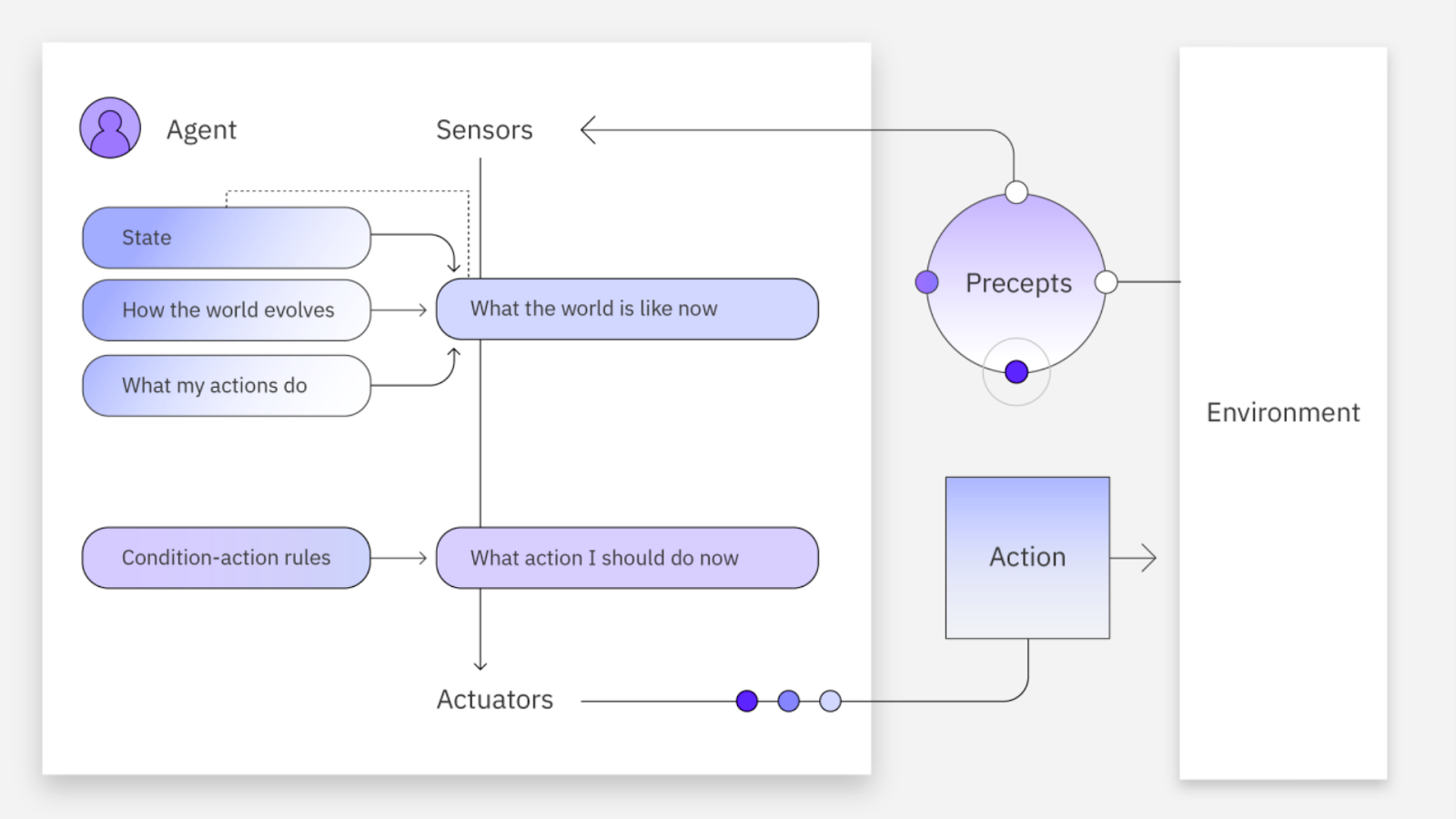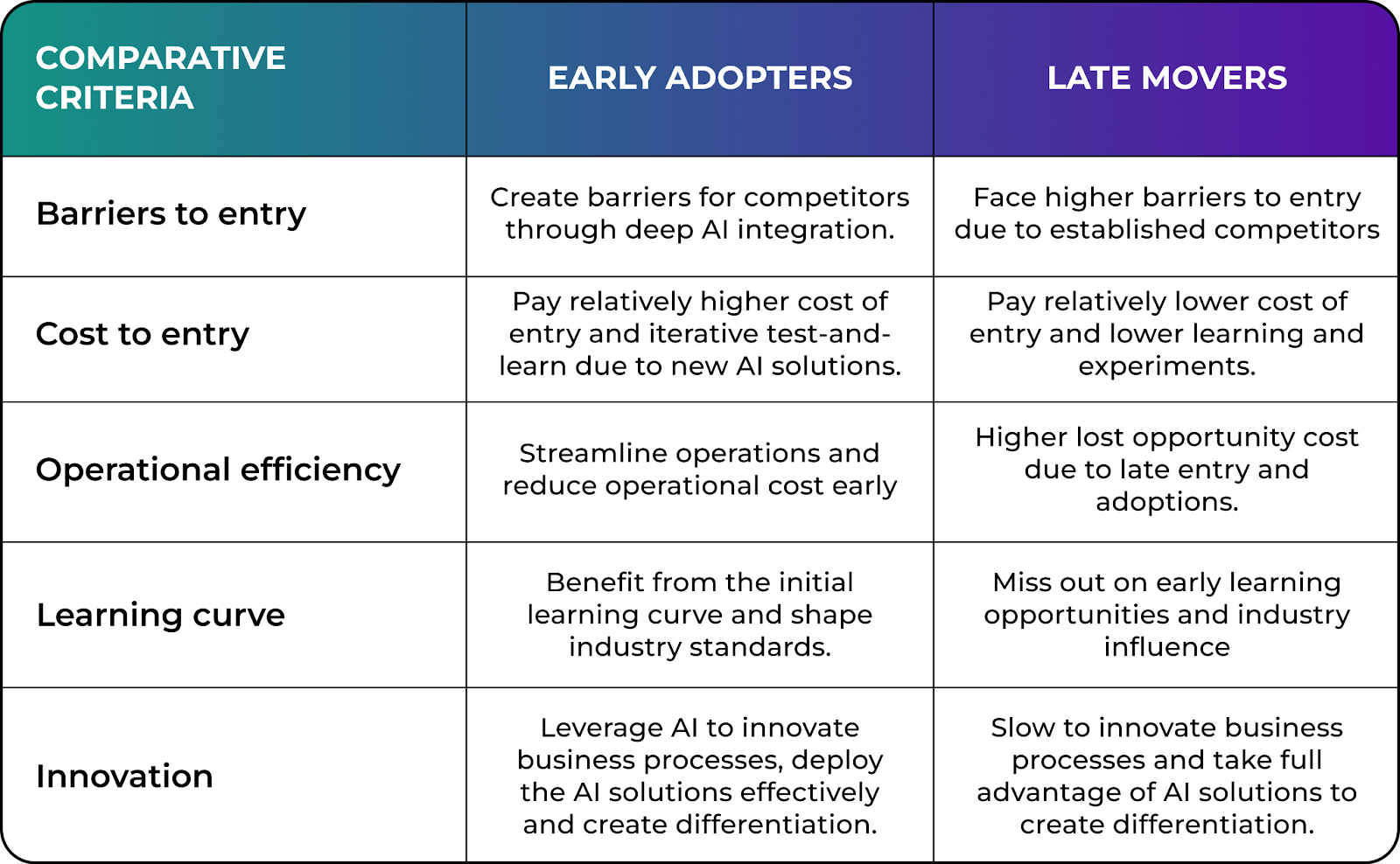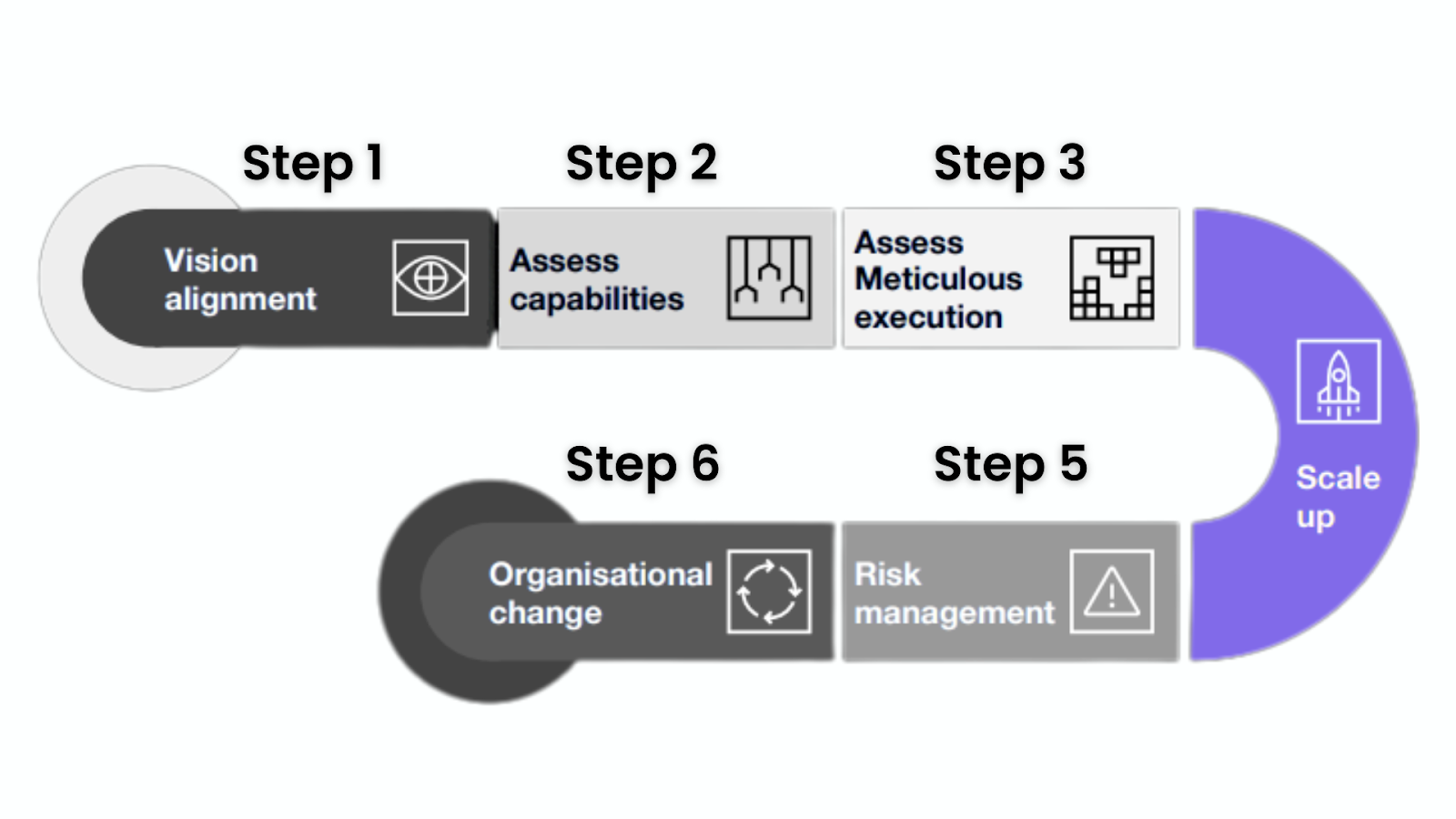Artificial intelligence is powering a technological flywheel where each advancement drives the development of even more sophisticated systems. While generative AI has driven the AI narrative since ChatGPT’s launch in late 2022, we believe that 2025 is shaping up to be the year of agentic AI, marking a shift from passive information processing towards proactive and actionable AI.
The central question isn’t whether to adopt this technology, but how swiftly organizations can integrate it to stay ahead of the competition. This executive playbook explores how organizations can leverage this technology to boost operational efficiency, enhance customer experience, and drive revenue growth. It provides real-world success stories spanning industry sectors and organizational functions, strategic insights, tactical blueprints, and best practices to guide your journey into this revolutionary landscape.
Why retailers love AI
Agentic AI refers to fully autonomous software capable of understanding user inputs and executing complex tasks independently. Unlike traditional chatbots that are limited to short-term goals and simply guide users through actions, AI agents complete long tasks on their own, continuously learning and adapting from interactions. They can leverage external resources, such as datasets, web searches, and even other AI agents, to fill information gaps and refine their knowledge base as needed to complete a task.
In global survey of nearly 1,500 IT leaders, 96% of organizations said they plan to expand their use of AI agents next year, and 84% believe agents are essential to staying competitive. What was once emerging tech is now a strategic imperative.
But while interest is high, scaling agentic AI isn’t simple. Fifty-three percent cite data privacy and compliance as their top concern. Others are held back by integration (40%), implementation complexity (39%), and gaps in governance (30%). These barriers aren’t stopping adoption but are forcing leaders to rethink how they go from pilots to production:

Why should organizations consider early adoption and avoid being late movers?
The speed of adoption often determines market leadership. According to McKinsey, companies that adopt new technologies early can achieve up to 2x faster revenue growth than those who delay. Early movers not only capture customer attention but also establish competitive advantages that become increasingly difficult, and costly , for late entrants to overcome.
The AI market is a prime example. Businesses that implement AI ahead of the curve report an average 20–30% boost in operational efficiency and significantly higher customer retention rates. Waiting for the “perfect moment” to adopt is often a costly mistake. Forrester research shows that late adopters spend up to 30% more trying to catch up with established competitors, due to retrofitting technology into outdated processes and losing ground in customer loyalty. By the time they enter, the early movers have already optimized, scaled, and built trust with their audience.
The choice is clear: early adoption isn’t just about embracing innovation – it’s about securing market position before the window of opportunity closes.

What obstacles can arise, and what’s our plan to resolve them?
Scaling agentic AI isn’t just a technical lift – it’s a trust test. As enterprises move from limited pilots to real-world workflows, concerns around data privacy, system integration, and ethics come into sharper focus.
Data privacy tops the list. With agents accessing sensitive systems like financial records, patient data, and proprietary insights, organizations must lock down what they can access and infer. The stakes are high: IBM reports the average data breach cost is $4.45 million, a figure expected to only keep climbing. One misstep can lead to compliance violations and a breakdown in public trust.
Curious how your AI strategy measures up when it comes to privacy? Let’s talk. Book a free consultation with our team – and partner with us to build compliant, future-proof AI solutions that inspire trust and drive innovation.
What if company’s cybersecurity team detects unusual traffic patterns? An investigation reveals a data breach where customer information, including personal details and purchase histories, has been compromised. Apparently, the breach occurred through vulnerabilities in the API connecting to the vendor’s LLM.
Considerations: When companies rely on vendor models via API, they expose their data to external threats. Data breaches can occur if the API is not adequately secured, allowing hackers to access or manipulate sensitive information. Insider threats also pose a significant risk; vendor employees or contractors might intentionally or accidentally leak data. Moreover, compliance with data protection regulations such as GDPR or HIPAA becomes complex. These laws often require data to be processed and stored within specific geographic boundaries, and using an external API might inadvertently send data across borders or into less secure environments.
Resolution: Self-hosting AI models keep data under direct control, reducing the risk of unauthorized access and simplifying compliance with global data protection laws.

Technical complexity follows close behind. Forty percent of leaders cite integration with legacy systems as a significant challenge, especially in sectors like telecom or finance, where infrastructure spans decades. More urgently, enterprises face a talent gap. Seventy-six percent of large companies report a shortage of AI-skilled talent, and 44% say it’s slowing them down. Agentic AI requires hybrid teams who understand both the tech and the business. Without that bridge, even well-funded projects can stall.
What if a company launches an AI-powered customer service assistant? Initial demos work flawlessly, but once rolled out, it struggles with high request volumes, misinterprets customer queries, and fails to integrate with legacy CRM systems. Developers are bogged down in patching the system instead of improving it, while customers grow frustrated with inconsistent responses – eroding trust in the brand.
Considerations: AI deployment requires robust infrastructure capable of scaling with demand, seamless integration with existing tools, and ongoing model retraining to maintain accuracy. Legacy systems may not easily connect with modern AI frameworks, requiring middleware or significant refactoring. Additionally, model performance can degrade over time without continuous tuning, leading to subpar outputs and wasted investments.
Resolution: Start with a scalable architecture and integration roadmap. A vision without execution is hallucination – align your GenAI strategy with actionable plans and meticulous execution.
This philosophy of building explainable, scalable, and trustworthy AI systems is best reflected in our partnership with Taw9eel, one of the region’s largest online retailers. To elevate its digital shopping experience, Dedicatted developed an AgenticAI architecture powered by AWS Bedrock, ECS, IAM, OpenSearch, and S3, and orchestrated via custom MCP servers that managed product search, trending insights, and semantic reasoning. Within months, Taw9eel achieved a 22% conversion increase, faster product discovery, and a positive ROI in Year 1, proving how practical, ethical AI can redefine customer engagement.
Read the full case study.

Vision alignment:
- Define clear objectives for the AI initiative – whether that’s faster response times, reduced ticket resolution costs, or improved customer satisfaction.
- Align AI projects with business goals so integration with the CRM directly supports revenue growth or service efficiency.
- Secure executive sponsorship to ensure resources for technical upgrades and cross-department alignment.
- Start with a high-impact pilot : such as integrating AI into one customer service channel – to demonstrate ROI early.
Assess capabilities:
- Technology infrastructure: Is your IT environment ready for AI integration?
- Platform options: Weigh-in commercial and open-source AI solutions and make build-vs-buy decisions based on your organization’s requirements, budget, and technical expertise.
- Consider integration: Ensure the chosen platform can integrate seamlessly with your existing systems and workflows, both upstream and downstream.
- Data readiness: Do you have access to quality, multimodal data?
Meticulous execution:
- Start small: Begin with small pilot projects to test the effectiveness of agentic AI in your business environment.
- Measure success: Define clear metrics for success and monitor the performance of the pilot projects. Gather feedback from stakeholders and make necessary adjustments.
- Agile methodology: Be flexible, nimble and adaptive in your implementations.
- Iterate and improve: Use the insights gained from pilot projects to refine your approach and address any challenges
Scale up:
- Gradual expansion: Once the pilot projects are successful, gradually scale up the implementation of agentic AI across more areas of your operations.
- Ensure support: Provide adequate training and support to your team to ensure a smooth transition and adoption of the new technology.
- Monitor and optimize: Continuously monitor the performance of agentic AI systems and optimize them for better results
Then there’s the ethical dimension. Fifty-one percent of leaders are concerned about bias in AI systems. A Yale study, cited in Cloudera’s report, showed that diagnostic agents trained on non-diverse datasets performed worse for underrepresented patients, leading to delays and misdiagnosis. Bias can surface at any stage – data collection, model design, or deploymen and scale quickly without strong oversight.
What if, in response to new ethical guidelines and compliance policies, the vendor company updates its LLM’s internal system prompt, inadvertently affecting yourCorp’s agentic AI behavior? Due to a nuanced legal situation, the updated prompt contradicts the organization’s AI operational goals. As a result, Corp’s AI systems behave erratically, promoting out-of-stock products or suggesting business strategies that conflict with corporate social responsibility policies.
Considerations: If the AI relies on client models for decision-making, changes in vendor ethics or compliance policies can bleed through to client AI systems. Such updates might not be communicated effectively, or the implications could be misunderstood due to the complexity of AI behavior. In this case, the vendor’s new ethical stance might prioritize different values or interpret laws in ways that conflict with Corp’s business model or operational ethics. This misalignment can lead to AI outputs or decisions detrimental to Corp’s objectives or customer relations.
Resolution: Self-hosting gives Corp the autonomy to ensure that any AI model updates align with their specific business ethics, compliance requirements and operational goals.
In Dedicatted , we understand the importance of balancing innovation, data privacy, and ethical considerations in AI development lies in ensuring sustainable technological progress while safeguarding individual rights and societal norms. Compliance fosters transparency and accountability in AI operations, leading to more reliable technology.
Contact us to create more responsible and user-centric AI solutions that are viable in a global market.


